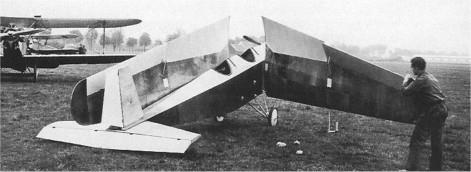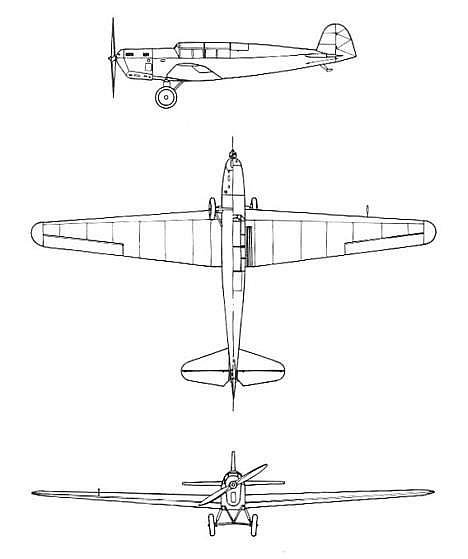| Type |
a Two seat sportplane |
a Two seat sportplane |
b Two seat sportplane |
b Two seat sportplane |
b Two seat sportplane |
| Engine |
ABC Scorpion II |
1 Salmson AD 9 |
1 Sh 13 |
1 Armstrong-Siddeley Genet 1 |
1 ADC Cirrus III |
| Dimensions |
Length 6.65 m, height 2.30 m, span 11.80 m, wingarea 14.40 m2 |
Length 6.65 m, height 2.30 m, span 11.80 m, wingarea 14.40 m2 |
Length 6.50 m, height 2.30 m, span 11.80 m, wingarea 14.40 m2 |
Length 6.66 m, height m, span 11.80 m, wingarea 14.40 m2 |
Length 6.43 m, heigh m, span 11.80 m, wingarea 14.40 m2 |
| Weights |
Empty 220 kg, fuel 70 kg, load 220 kg, flying weight 440 kg |
Empty 250 kg, fuel 70 kg, load 230 kg, flying weight 480 kg |
Empty 325 kg, fuel 70 kg, load 270 kg, flying weight 595 kg |
Empty 285 kg, fuel 70 kg, load 250 kg, flying weight 535 kg
|
Empty 335 kg, fuel 70 kg, load 245 kg, flying weight 600 kg
|
| Performance |
Max. speed 130 km/h, climb to 1000 m 13 min., service ceiling 3300 m, range 920 km, landing speed 60 km/h |
Max. speed 140 km/h, climb to 1000 m 10,5 min., service ceiling 3700 m, range 810 km, landing speed 62 km/h |
Max. speed 162 km/h, climb to 1000 m 5,5 min., service ceiling 4800 m, range 800 km, landing speed 65 km/h |
Max. speed 165 km/h, climb to 1000 m 5,7 min., service ceiling 5600 m, range 800 km, landing speed 65 km/h
|
Max. speed 180 km/h, climb to 1000 m 5,0 min., service ceiling 5300 m, range 700 km, landing speed 68 km/h
|
| Type |
b Two seat sportplane |
b Two seat sportplane |
b Two seat sportplane |
c Two seat sportplane |
c Two seat sportplane |
| Engine |
1 ADC Cirrus Herme |
1 Sh 14 |
1 BMW X |
1 Argus As 8 |
1 Sh 14a |
| Dimensions |
Length 6.43 m, height 2.30 m, span 11.80 m, wingarea 14.40 m2 |
Length 6.35 m, height 2.30 m, span 11.80 m, wingarea 14.40 m2 |
Length 6.50 m, height 2.30 m, span 11.80 m, wingarea 14.40 m2 |
Length 7,0 m, height m, span 12,0 m, wingarea 14.40 m2 |
Length 7,0 m, height m, span 12,0 m, wingarea 14.40 m2 |
| Weights |
Empty 360 kg, fuel 70 kg, load 240 kg, flying weight 600 kg |
Empty 370 kg, fuel 70 kg, load 300 kg, flying weight 670 kg |
Empty 308 kg, fuel 70 kg, load 292 kg, flying weight 600 kg
|
Empty 320 kg, fuel 70 kg, load 280 kg, flying weight 600 kg
|
Empty 400 kg, fuel 70 kg, load 200 kg, flying weight 600 kg |
| Performance |
Max. speed 185 km/h, climb to 1000 m 4.5 min., service ceiling 6000 m, range 700 km, landing speed 68 km/h |
Max. speed 185 km/h, climb to 1000 m 5,9 min., service ceiling 5200 m, range 1000 km, landing speed 70 km/h |
Max. speed 140 km/h, |
Max. speed 175 km/h, climb to 1000 m 4 min., service ceiling 6150 m, range 750 km, landing speed 70 km/h |
Max. speed 220 km/h, cruising speed 185 km/h, climb to 1000 m 1,2 min., service ceiling 6500 m, |



